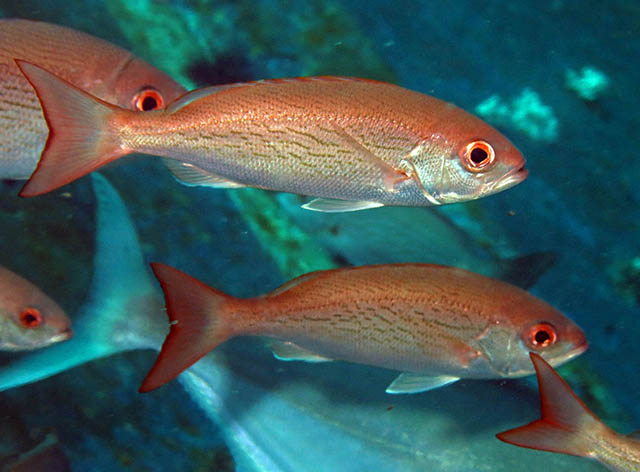| Lutjanidae (Snappers), subfamily: Lutjaninae |
| 60 cm TL (male/unsexed); max.weight: 3,170.0 g; max. reported age: 10 years |
|
demersal; marine; depth range 40 - 300 m |
| Western Atlantic: Bermuda and North Carolina, USA, to São Paulo, Brazil (Ref. 57756), including West Indies, Gulf of Mexico and Caribbean Sea (Anderson, pers. comm.). |
|
Dorsal spines (total): 12-13; Dorsal soft rays (total): 10-11; Anal spines: 3-3; Anal soft rays: 8-8. Snout short, lower jaw slightly projecting. Mouth small. Pectoral fins relatively short, not reaching level of anus. Scale rows on back rising obliquely above lateral line. Back and upper sides vermilion, shading to silvery with reddish tinge ventrally, with narrow horizontal yellow lines below the lateral line. The dorsal and caudal fins yellowish; the anal and pelvic fins whitish. |
| Adults are found in moderately deep waters, most common over rock, gravel or sand bottoms near the edge of the continental and island shelves, often in large schools. Young fish occur in shallower depths (below 25 m), also often forming large schools. They feed on fishes, shrimps, crabs, polychaetes, other benthic invertebrates, cephalopods and planktonic organisms. Good food fish (Ref. 9626). |
|
Vulnerable (VU); Date assessed: 10 October 2015 (A2bd) Ref. (130435)
|
| harmless |
Source and more info: www.fishbase.org. For personal, classroom, and other internal use only. Not for publication.
